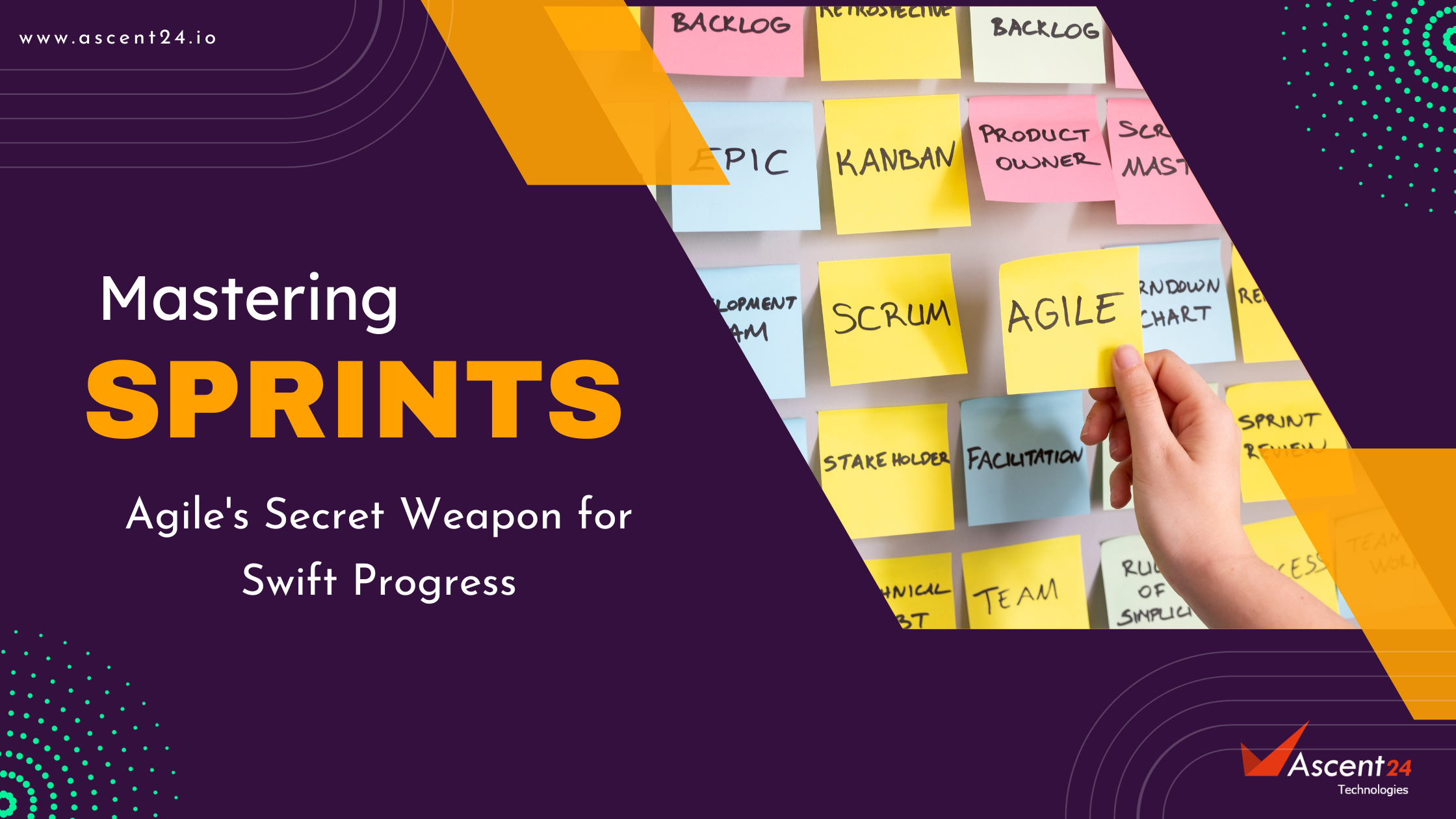
Mastering Sprints: Agile’s Secret Weapon for Swift Progress
Mastering Sprints for Agile POD methodology is the new trend in project management. Agile POD methodology, when executed effectively using tools like JIRA, can significantly enhance software development processes. By fostering collaboration, streamlining planning and implementation, and focusing on sustained growth, organizations can unlock the full potential of this dynamic approach. This is where the concept of sprints comes into play. Sprints are a cornerstone of the Agile methodology, providing a structured framework for iterative development cycles. In this article, we’ll delve into what sprints are, how they work, and what magic mastering sprints does to your business.
Sprints
A sprint is a time-bound iteration in Agile software development, typically lasting 2–4 weeks, during which a cross-functional team focuses on completing a set of prioritized tasks. The goal of a sprint is to deliver a potentially shippable product increment by the end of the iteration. It provides a structured framework for iterative development, promoting quick feedback, adaptability, and a steady cadence of progress.
How do Sprints work in Agile POD
In Agile POD methodology, a sprint-centric approach is an integral part, as the team benefits from increased transparency, adaptability, and a consistent rhythm of progress. This ensures that development efforts are aligned with business goals, ultimately leading to more successful and efficient software projects.
Here’s how sprints work within an Agile POD:
Sprint Planning: Begin by meticulously prioritizing tasks and setting clear sprint goals. Involve all Agile POD members in this process, ensuring everyone understands their responsibilities and commitments. The Agile POD team, including specialists and the POD Owner, collaborates to select and commit to a set of prioritized tasks from the backlog. These tasks are intended to be completed within the defined sprint duration, typically 2–4 weeks.
Daily Stand-ups: The team conducts a focused daily stand-up meetings to discuss progress, challenges, and goals. Each member provides updates on their tasks, helping to identify and address any potential blockers. This fosters transparency and ensures everyone is aligned with the sprint’s objectives.
Focused Development and Testing: During the sprint, the Agile POD members work collaboratively on their assigned tasks. Developers write code, designers create interfaces, testers perform rigorous testing, and other specialists contribute their expertise. This concentrated effort is crucial for achieving the sprint’s goals.
Prioritize Backlog Refinement: Regularly revisit and refine the backlog. Ensure that tasks are well-defined, properly estimated, and aligned with project priorities. This ensures that the team always has a clear path forward.
Incremental Progress: Throughout the sprint, the product incrementally evolves, with features becoming functional and integrated. The emphasis is on delivering tangible value at the end of each sprint, which aligns with the Agile principle of delivering a potentially shippable product at the end of every iteration.
Sprint Review and Retrospective: At the end of the sprint, the team holds a sprint review to demonstrate the completed work to stakeholders. This provides an opportunity for feedback and validation. Following the review, a sprint retrospective is conducted to reflect on what went well and what could be improved. Action items are identified to enhance future sprints.

Magic of Mastering Sprints
Mastering sprints in your business can yield significant benefits:
Accelerated Time-to-Market: Sprints focus on delivering incremental value at the end of each iteration. This means that usable features are available sooner, allowing businesses to respond swiftly to market demands and gain a competitive edge.
Improved Customer Satisfaction: Quick, iterative releases mean that customers can start using and benefiting from new features sooner. This leads to higher satisfaction levels as their needs are addressed promptly, and they see tangible progress in the product.
Enhanced Adaptability: Sprints facilitate a more flexible development process. Teams can swiftly pivot in response to changing requirements, emerging technologies, or shifts in the competitive landscape, ensuring that the product remains relevant and aligned with market demands.
Efficient Resource Allocation: Sprints enable precise planning and allocation of resources. With clear sprint goals and defined work scopes, teams can optimize their efforts, ensuring that the most valuable features are developed within a set timeframe.
Reduced Risk and Uncertainty: Breaking down projects into manageable sprints reduces the risk of large-scale project failure. It allows for regular feedback and course correction, ensuring that the project remains on track and aligned with business objectives.
Increased Team Morale and Productivity: Sprints promote a sense of achievement and progress, as teams see tangible results at the end of each iteration. This boosts morale and motivation, creating a positive work environment that fosters creativity and innovation.
Conclusion
Mastering sprints is a strategic move that not only accelerates development but also ensures that businesses remain adaptable, customer-focused, and efficient in delivering high-quality products to the market. It’s a cornerstone of Agile methodology that can significantly impact a business’s success in the competitive landscape.
Ascent24 Technologies, a custom software development company, utilizes the magic of Sprints in the Agile POD and is assisting clients with expertise offshore resource support in software development. The team Ascent24 Technologies is expertise in using tools like JIRA, Trello and more for effective project management.
Build your digital vision with us!










Leave a reply